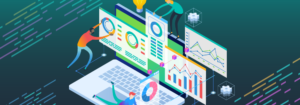ConcertoCare (previously called Concerto Health) is a leading, risk-bearing provider of field-based complex care for vulnerable populations in California. By focusing on addressing social determinants of health, they apply data to effectively deliver high-touch, individualized care to create measurable impact.
The Challenge:
ConcertoCare came to MedeAnalytics with a few central business objectives:
- Address vulnerable populations
- Reduce hospitalizations for target groups
- Segment population groups for effective care management.
They also had big goals for growing analytics and reporting capabilities, including determining “impactable” populations for interventions, aggregating data for patient stratification and cost analysis, and obtaining actionable insights about vulnerable patient populations.
The Solution:
Our Population Health solution enables ConcertoCare to stratify risk and to assess cost and utilization patterns in the population to identify appropriate areas for intervention. More specifically, they:
- Use predictive analytics to impact the most complex 5% of the population and address rising risk in up to 20% of the population.
- Proactively look at Cost and Utilization patterns to identify and prioritize care and interventions for the patients who are the most vulnerable and most at risk.
- Categorize data by assigning Adjusted Clinical Groups (ACGs) to each patient based on morbidity, age and sex.
Measurable Impact:
ConcertoCare’s innovative population health analytics powered by MedeAnalytics substantially reduced hospitalization rates below the national averages for its Medicare patients.
- Admissions by 47%
- Readmissions by 40%
- ER visits by 16%
“We were able to significantly decrease unnecessary utilization for an entire population with MedeAnalytics’ predictive analytics.The insights allow the ConcertoCare home-based care team to intervene with patients to slow down disease progression and keep them safely out of the hospital, while uniquely addressing their myriad of complex care needs.”
– Dr. Chris Dodd M.D., Chief Clinical Officer
To read the full story behind the numbers, download the success story.
Get our take on industry trends
Gamification in healthcare only works if you can measure it – here’s how
In business and in sports, it’s all about teams. What teams can accomplish when they work together. How they can fail spectacularly when they do
Read on...Pandemic fuels 2021 healthcare megatrends
When I wrote about megatrends last year, the predictions were, naturally, forward-looking. Telehealth, for example, was important because of increased healthcare consumerism and the convergence of technologies to make its use quick and easy for payers, providers and patients.
Read on...Measuring provider cost and utilization
No matter the time of year, payers and providers should work to agree on a shared source of truth when it comes to data. With the recent end of the year, it’s time to celebrate the new year (who isn’t ready to say goodbye to 2020?) and close the books, which includes the reconciliation of any shared savings or losses.
Read on...Data visualization: A picture is worth a thousand…healthcare data points?
The amount of data produced daily has grown exponentially with nearly 90% of the world’s data generated in the last two years alone. To ensure we can make sense of this data, analysts must find meaningful ways to present the information to their audiences.
Read on...


